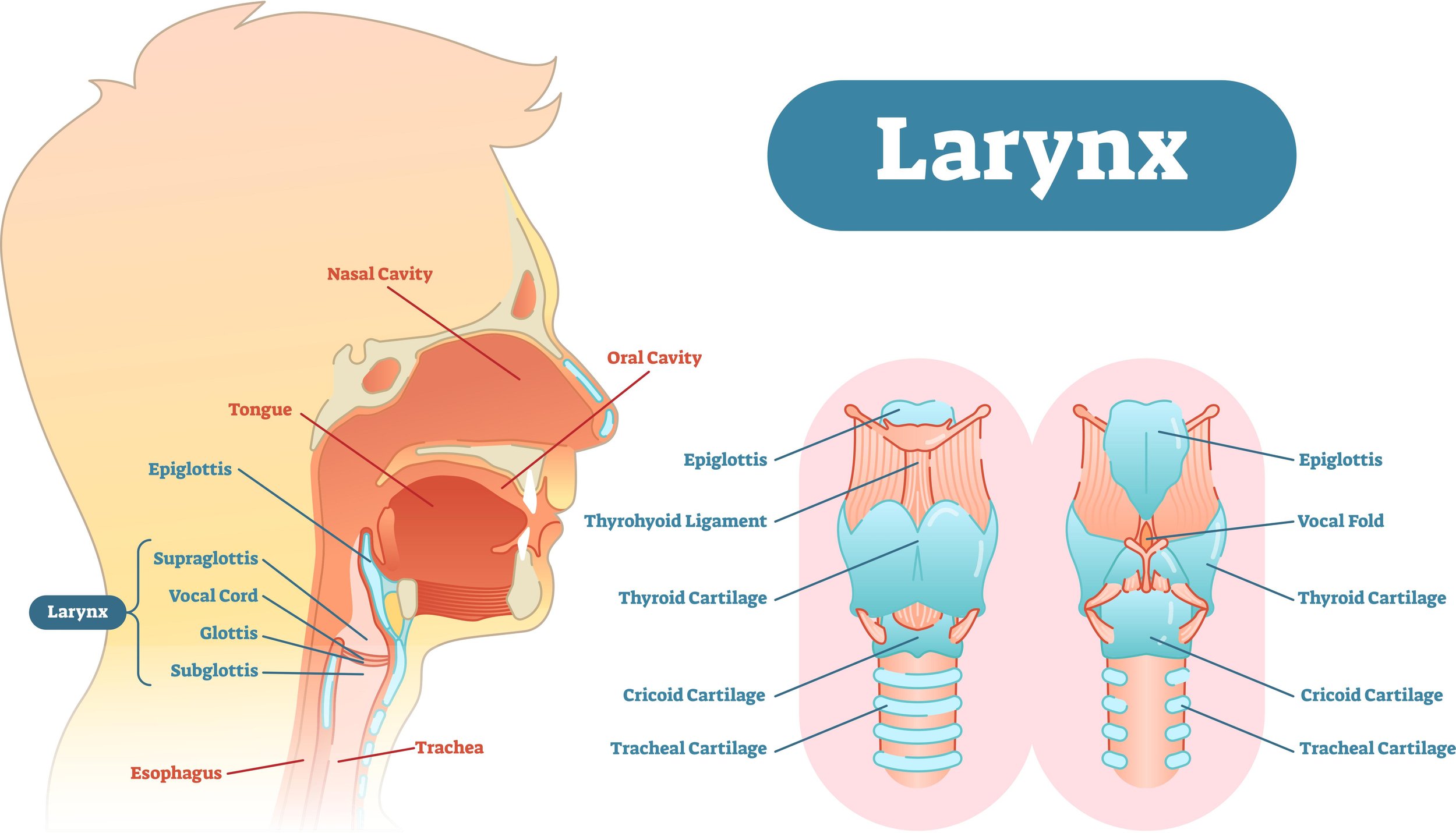Trans Voice: The Vocal Tract
How is it possible to feminize, masculinize, or make your voice sound more androgynous??
By understanding the vocal tract!
Keep reading to learn what the vocal tract is, what it does, and how that applies to you as you are transitioning your voice.
In order to speak or sing, we inhale, and as we exhale, our air passes through the vocal folds, which are two bands of muscle tissue that vibrate quickly, creating sound. That sound then passes through what we call the vocal tract. The vocal tract is made up of many parts. The larynx, the pharynx or throat, tongue, soft palate, and the lips.
The vocal tract filters the sound that is created by our vocal folds. So you’ll be able to achieve different sound qualities by manipulating each part of the vocal tract.
Larynx
So, we’re going to start with the larynx. The larynx is the cartilage structure that houses our vocal folds, right at the top of the trachea, or the windpipe. It’s a very mobile structure because it’s only attached to one bone, called the hyoid bone. There are muscles that pull the larynx up and down, which changes the length of the vocal tract.
If you’re working on feminizing your voice, or working toward a brighter sound, you’ll want to keep your vocal tract as short or as you can by raising the larynx.
Feel the larynx move up by putting your fingers on your larynx and swallowing!
If you’re working on masculinizing your voice, or working toward a darker sound, you’ll want to lengthen your vocal tract by lowering the larynx.
Feel the larynx move down by putting your fingers on your larynx and yawning or imagining being surprised by good news with a silent gasp.
Pharynx (Throat)
The pharynx, or throat, is the area up above the larynx and behind the tongue. When the pharynx is relaxed, it’s as large as it can be, which will lead to a darker sound quality, which you may be looking for if you’re masculinizing your voice. When the pharynx is constricted, there will be less space in the vocal tract, resulting in a brighter sound quality, or a more feminine sound.
The pharynx is also responsible for some of the movement of the larynx. When the pharynx is narrowed, the larynx will raise because it’s being pushed up. When the pharynx is neutral, the larynx will maintain its position.
Tongue
We use our tongue all day to speak and eat, but you might not be super aware of how it moves. So, let’s notice the position of your tongue when you say different vowel sounds.
Try saying the vowel ‘ah’. What do you notice? Where is your tongue in your mouth? You should feel your tongue laying flat at the bottom of your mouth.
Now try ‘ee’. It might be helpful to touch the tip of your tongue to the back of your bottom teeth. You can also try going back and forth between ‘ee’ and ‘ah. You should feel the back of your tongue raising up higher toward the top of your mouth.
In the ‘ee’ position, there is less space at the front of your mouth, which creates a brighter sound quality, which you’ll use when you’re feminizing your voice.
Soft Palate
The soft palate is the soft tissue at the back of the roof of your mouth. So if you run the tip of your tongue along the roof of your mouth from the front, you’ll feel the hard bumpy part, and where that stops, and it’s soft and flexible, you’ve hit the soft palate.
The soft palate lifts and lowers for different vowel sounds, and it’s the connection to the nasal cavity. It lifts to prevent whatever you’re eating and drinking from going into the nasal cavity.
Try yawning to feel your soft palate lift.
Try saying ‘ng’, as in “hung”. You should feel your tongue lifting up to the soft palate as the soft palate descends. If you plug your nose, you’ll notice that the sound stops because the sound is totally coming out of your nasal cavity and not your mouth.
Lips
By changing the position of the lips, we can make the vocal tract longer or shorter, which filters the sound.
Try saying “Hi, how are you”. Then try it with your lips puckered forward. If we move the lips forward, the vocal tract lengthens, which makes the sound darker, which you may like if you’re masculinizing your voice.
Now try saying “Hi, how are you'“ with your lips spread open in a smile position. This shortens the vocal tract and make the sound brighter, which you may like if you’re feminizing your voice.
So, these are the different parts of the vocal tract! Play around with these few exercises, and bring your awareness to all the different ways you can filter your sound! Want to learn more? Click here to learn more about how the vocal tract figures into pronunciation
Inspired to start your vocal training? Book your first trans voice lesson below!





















